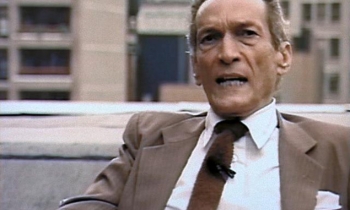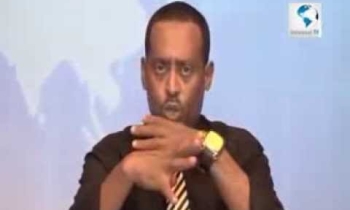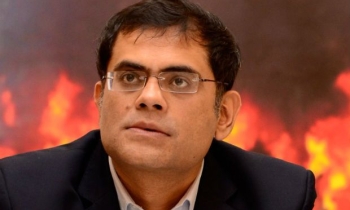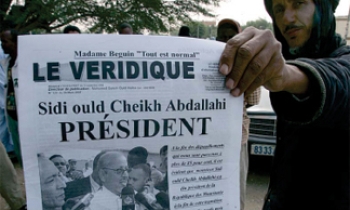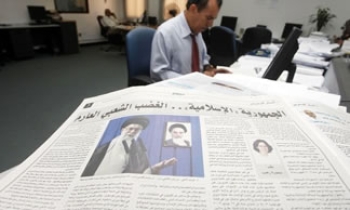The mainstream media's response to the Niira Radia tapes gives journalists a lot to think about.
The two media figures who have attracted the most attention in connection with this controversy — Barkha Dutt and Vir Sanghvi — have each offered their clarifications. Barkha's defence is on the NDTV website, and Vir's in his latest column in Hindustan Times. I won't get into the merit of their arguments, for two reasons: one, Open magazine's Hartosh Singh Bal has already done a comprehensive job of nailing their prevarications in a piece titled 'This Is Not Journalism As We Know It'; two, I believe the perceived improprieties of Barkha and Vir and the other journalists tainted by the Niira Radia tapes are only symptomatic of a larger malaise afflicting the media, and that's what I want to discuss in this follow-up to my previous post, 'When Radia Killed The Media Star'.
A step back into media history
The great cultural historian Raymond Williams, in his book, Keywords, notes under the entry 'media' that the word, when it was first applied to the press, was used to describe newspapers as "a medium for advertising." Not for news. In his brilliant study of broadcast media, Television: Technology And Cultural Form, Williams shows how right from the beginning — from even before TV became an industry — it was always a technology of transmission, never a technology of communication. The point he makes about TV applies equally to print media as well.
What this means is that TV (and mass media as such) is a system "primarily devised for transmission and reception as abstract processes, with little or no definition of preceding content." He adds, "When the question of content was raised, it was resolved, in the main, parasitically." Content was not only not the king, it was an afterthought. What came before content was the fact that it would have to be parasitical. And we know today that mass media content has always been parasitical on advertising. To take an obvious example, why does every news channel parade almost the same set of talking heads week after week in the name of 'analysis'? Because it is cheaper to produce studio-based 'content' than to send out a team of cameramen and reporters to different corners of the country where there are thousands of stories waiting to be told. Anybody who's ever worked in a media organisation knows that budgets for news gathering resources (human and financial) are the first casualties of cost-cutting. That is how much media houses (there are exceptions, of course) really care about 'content', and about the consumer of that content — the viewer/reader.
A little peep into media history would show that the very development of the press, parallel to the rise of industrial society, was a response to the centralisation of political power and the need for "messages from that centre along other than official lines." As Noam Chomsky has documented, media has for long served as the eyes and ears and mouths of power.
What the Radia tapes have done is to lift the ideological veil of the media as a 'watchdog' and demolish the humbug about a 'free press'. This is not to say that the media has never been or can never be anything but the handmaiden of power elites. Not at all. If all that were all it ever was, it wouldn't pose a threat to tyranny. It would never need to be gagged, as it was, during the Emergency. In other words, the chumminess between journalists, businessmen and politicians that the Radia tapes showcase is symptomatic not of a media in crisis, but of a society where almost all possible counter-weights to the power of the corporate-state nexus has been eliminated. Rajya Sabha MP and former FICCI president Rajeev Chandrasekhar offers a ringside view of this phenomenon vis-a-vis the 2G scam in this interview with Tehelka. By the way, one such counterweight to the neta-lala coalition is supposed to be an independent press, powerful sections of which, as the Radia tapes reveal, have instead chosen to throw their weight behind the corporatocracy.
Transmission to communication
Communication is a two way process: transmission from source to receiver, and from receiver back to source. For Williams, it meant "active reception and living response," which required "recognition of practical equality".
The Radia tapes are a watershed in the history of Indian media (just as the Wikileaks are a landmark development in the history of world media) because they mark a tectonic shift from mass media as transmission to mass media as communication. This shift is tectonic because it signifies a change in the existing balance of power, in the direction of "practical equality."
The Radia tapes and Wikileaks are a live demo of this power shift. In both the cases, the content (or the decision to convert some material into content) did not originate from an official source. Though the Radia tapes were put out by print publications, we all saw that social media like Twitter can do one thing more efficiently, and quicker, than traditional media: distribution. Twitter did it, despite the limit of 140 characters, through the rapid circulation of website links. The tapes went viral before anyone could say 'black out'.
Indeed, given the blackout by the offline media, if it weren't for Twitter, Facebook, blogs, and their own websites, Outlook and Open would not have garnered the kind of response they did for the Radia transcripts. Two factors were at play here: one, while the press (TV and newspapers) are privately owned, financed, and controlled, content on the world wide web is not owned and controlled by a handful of mega-corporations (at least not yet); two, the response loop of communication that digital media makes possible on a mass scale (Open magazine estimates that over a million people read or heard the Radia transcripts in less than a week despitethe blackout by mainstream media) personalises media space and enables the reader/viewer to compare one medium/message against the other. The Guardian editor Alan Rusbridger calls this the "splintering of the fourth estate." Rusbridger observes, "the ability to communicate without having to go through a traditional intermediary is transformative."
It is transformative because it democratises the social space where 'mediation' takes place. It does this, most obviously, by undermining the concentration of media ownership. Already the print media in the West, in the US specifically, is waging a losing battle against the digital assault, with large sections of the population giving up newspapers for online sources of news. The newspapers haven't helped their cause by continuing to function primarily as conduits for state and corporate propaganda — which is where their money comes from, as the reasoning goes — and failing to address the concerns of their readers (who are merely the 'product' they deliver to their real clients, the advertisers) in a meaningful way. The more they lose money, the more they cut back on news gathering resources such as editorial staff; the more they cut back on editorial, the less they are able to deliver quality content to their readers; the less they are relevant to their readers, the less they sell; the less they sell, the more their losses — and the downward spiral continues till they go bankrupt or close down.
In digital media, traditional media now has a fierce competitor (and monitor) in generation and distribution of news. If journalism continues to offer paid-for 'edvertorials', plagiarised commentary, and undigested bits of government and corporate plants as 'content', it is only a matter of time before they make themselves irrelevant to all but the tiniest elite of SEC Ultra-Delux A category of consumer, a group that might, eventually, dwindle down to their own advertisers and their in-laws.
The hold of pragmatism
The tightening of the corporate grip over most institutions of public life — in the post-Reagan era in the US, and in the post-liberalisation years in India — has gradually edged out value-based decision-making in favour of pragmatism as the defining philosophy. In practical terms, this means bowing to corporate diktats, to the worship of profit as the highest value, and to the deification of the market as the arbiter of ethical dilemmas. This is the moral framework in which TV debates and newspaper editorials debate mining licenses and nuclear reactors. This is what dictates which stories are carried, and, which ones, blacked out.
That despite the much vaunted plenitude of choice — given the hundreds of TV channels and newspapers — the blackout took place on such a vast scale, points not only to the triumph of expediency over journalistic values, but also to the sameness of the social, financial, ethical and power dynamic at work in a multitude of media outfits.
It should, therefore, not be surprising that even a journalist like Shoma Chaudhury, who, as a founder-editor of Tehelka, should know a thing or two about speaking truth to power feels compelled to soft-pedal a clear breach of media ethics. In a recent column titled, 'Media Ethics: Why We Need Both Panic And A Pinch Of Salt', she writes, "...even Barkha's harshest critics would concede that her actions do not count as the dark heart of the genuine media crisis in India." Open editor Manu Joseph, who no one would count as Barkha's harshest critic, has a simple, common-sensical question: If Barkha's conversations with Radia were part of journalistic process, then "journalistic process must result in journalism-if not immediately, at some point." Did Barkha ever, ever report on the Tata telecom PR chief negotiating for the telecom portfolio? No. Can we then conclude that there was only 'journalistic process' happening in those tapes?
We, the powerful
Which brings me to why Barkha, more than Vir or any of the other journalists who figure in the Radia tapes, is at the heart of the current debate on the crisis in Indian media. And the answer goes beyond her perceived role in the Radia tapes scandal, to the cumulative impact and meaning of her past actions as a journalist.
The most obvious reason is what can only be understood as a supreme disregard for the audience. Far from being unique to her, this mindset is symptomatic of a media that, while paying lip service to the reader/audience, demonstrates in its actions what it actually thinks of the reader/viewer: that he is a dunce who will take whatever bilge you dish out and has no time for intelligent, in-depth reporting or analysis; that you can fool him into thinking that a studio slanging match is a reflection of public opinion, or that talking continuously is the same as saying something.
The Radia tapes episode is not the first time she is under attack for ethical impropriety. It has been alleged that her Kargil coverage endangered Indian soldiers by giving away troop locations. Her coverage of the 26/11 Mumbai terror attacks was criticised for compromising rescue operations. Her legal notice to blogger Chyetanya Kunte who had had criticised her 26/11 coverage was widely condemned in the blogosphere. Is this the track record one expects of an award-winning journalist? (Wikipedia provides a long list of all the awards she has won. She was conferred the Padma Shri in 2008, making her the only 'Padma Shri journalist' in the Radia tapes leaked so far). But then, deploying one's power and influence to have one's way and browbeat critics seems to be the done thing these days. And that's how a sense of impunity creeps in. Ask Mitali Saran, who till recently was a columnist for a business daily.
The latest demonstration of Barkha's disregard for her audience is her disabling of reader comments to her statement regarding her conversations with Radia. Prabhu Chawla, who also features in the tapes, hasn't disabled comments on his blog where he has posted his clarification. Nor has Vir Sanghvi, who at least had the good sense to withdraw his column temporarily. That Vir has chosen not to brazen it out indicates that he has some regard for his readers. But Barkha is not interested in communicating with her audience — only in transmitting to them her point of view, and it's immaterial what they think. One would have thought that the more the accolades the greater would be the obligation to come clean and take criticism with humility instead of rage.
Access-based journalism
The Niira Radia tapes are not aberrations in an otherwise healthy media but the inevitable irruption of an old illness that, in the absence of treatment, has begun eating into its vitals. What we need to 'engender' is not merely another round of 'debate' but a conscience, and a vigilant awareness of the blandishments of power. For a media organisation, utopian as it may sound, this means at best, an antagonistic relationship to power, and at worst, a guarded neutrality to it, but definitely not the intimacy on display in the Radia tapes.
For working journalists, it implies, not proximity, but distance, from power. But I don't know many senior journalists who can get by without breaking this simple rule. For a good journalist today is defined not by his news judgment, or by his integrity, or by his dogged pursuit of leads, but by his degree of access to people in power, to celebrities, to sources in 'high places'. This assumption that a journalist is only as good as his phone book is at the heart of both Barkha's and Vir's defence that they were stringing a source along and that is why they made promises (to pass messages) they never intended to keep. In fact, the logical endpoint of access-based journalism is embedded journalism.
Any journalist who puts in years of old-fashioned hard work will develop contacts and sources as a matter of course. But this 'access' school of journalism that puts 'humouring' of sources before adherence to basic norms of journalism is, as a matter of fact, at the heart of the current media crisis. Two examples spring to mind. One is the cricket match-fixing scandal that many of India's top sports journalists knew about but did not write about, presumably because they could not offend their sources — the mandarins in the BCCI. It was finally a journalist who was not a sports reporter, Aniruddha Bahal, who broke the match-fixing story. The second example is the Satyam scam. It is inconceivable that not a single business journalist in the entire country had an inkling of it. Eventually, it was Ramalinga Raju himself who 'broke' the story by releasing his resignation letter.
Of course, not every problem plaguing the media can be attributed to the 'moral flaccidity' of editors. Media owners obviously have a huge role to play. A lot depends on how much respect they have for serious journalism; on whether they treat editors merely as content managers or as professionals with an obligation to society; on whether they believe the business of news to possess a social dimension or consider it as no different from selling soap, with the added bonus of a certain power and prestige that soap-selling or wealth alone cannot offer — a power that can be deployed to promote other business interests or settle scores. More often than not, the average journalist takes his cue from the signals emanating from the top. Yet this is where digital media offers some hope of evening things out for the journalist genuinely interested in practicing his craft.
Online media may still not be adequately 'monetised' yet, but it represents the future model of communication even for traditional media: no longer transmission from a centre to many recipients, but a two-way process of communication that will go from many to many around hubs that continue to practice journalism of the traditional kind. Though in the short run this may not yield an alternative to the traditional model where advertising subsidises editorial content, it ought to provide a greater incentive for media houses and journalists not to take their audiences for granted.


